Deployment scenarios
You can deploy the BMC Helix Single Sign-On server to accommodate a range of conditions and use cases described in this topic.
BMC Helix SSO installed in standalone mode
In a standalone mode, you deploy BMC Helix SSO on a single server, and then integrate BMC Helix SSO with the applications on which you would like to enable a single sign-on end user experience. When you deploy the BMC Helix SSO server to your environment, consider the following use cases:
BMC Helix SSO integrated with applications hosted on a single domain
The following figure shows the basic deployment use case when all components of the BMC Helix SSO system are hosted on the same domain:
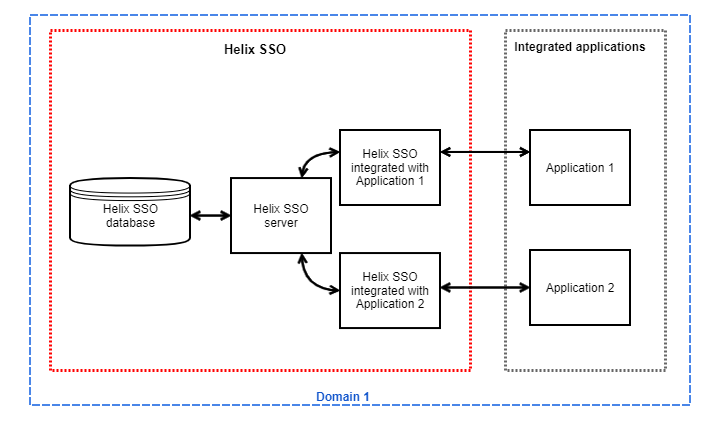
For example, you might have BMC Helix Digital Workplace (corresponds to Application 1 in this figure) and BMC Helix Digital Workplace Catalog (corresponds to Application 2 in this figure) integrated with BMC Helix SSO.
BMC Helix SSO integrated with applications hosted on multiple domains
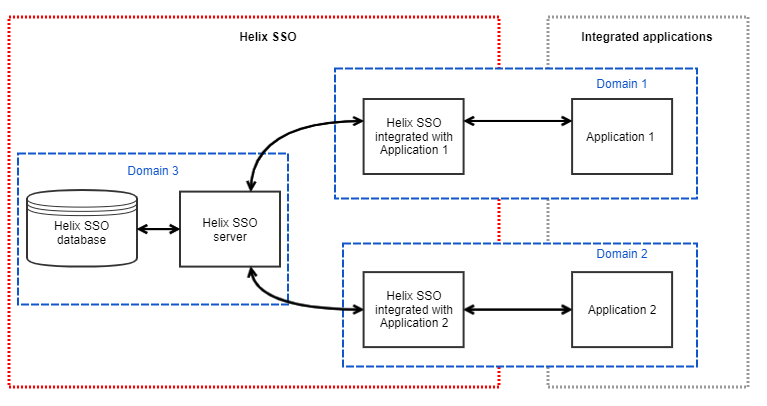
If your applications are hosted on different domains, you must configure them to use the same BMC Helix SSO server for authentication. For information about how to do this, see Configuring BMC Helix SSO for applications hosted on different domains.
Single sign-on experience enabled for applications not integrated with the same BMC Helix SSO server
To enable single sign-on experience between applications that do not share the same BMC Helix SSO server and are deployed in different domains, you must have the BMC Helix SSO server deployed as shown in the following figure:
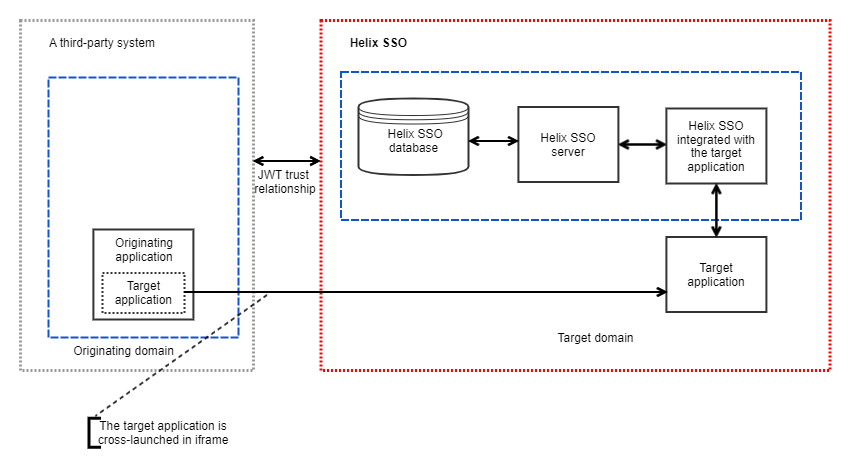
The originating application cross-launches the target application in an iframe without displaying the login page to end users. The target server relies on the JWT public certificate to validate the incoming cross-launch request from the originating server.
The originating application can be a part of a third-party system, but it can also be a part of another BMC Helix SSO as shown in the following figure:
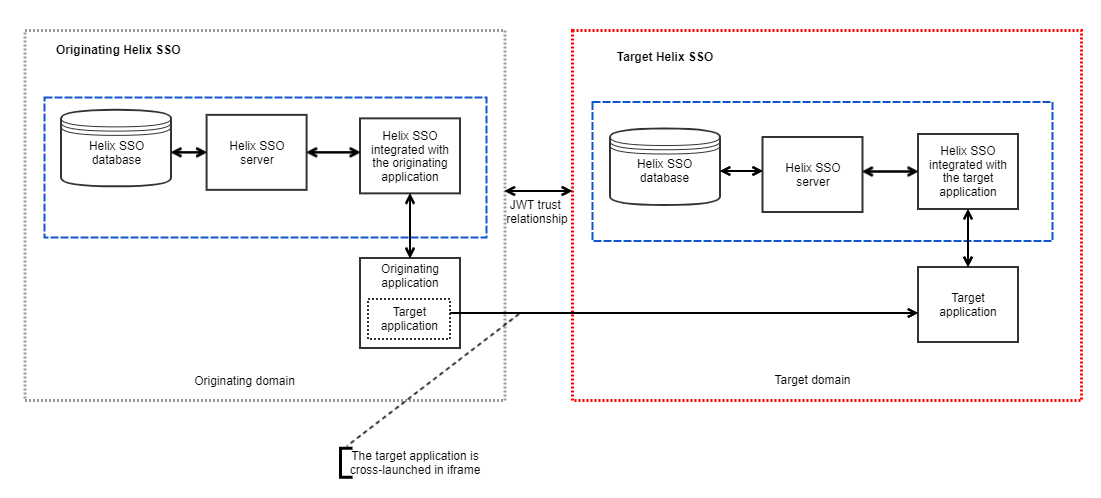
To configure BMC Helix SSO to support this case, perform tasks described in Enabling cross launch for applications integrated with different BMC Helix SSO servers.
BMC Helix SSO installed in high availability mode
To implement BMC Helix SSO as a redundant system with session failover, you can deploy the BMC Helix SSO in a high availability (HA) mode. In HA mode, multiple instances of the BMC Helix SSO server are deployed, and a load balancer is usually used as a front end of the HA mode. For external applications, the load balancer functions as a single server that distributes the requests over multiple BMC Helix SSO nodes.
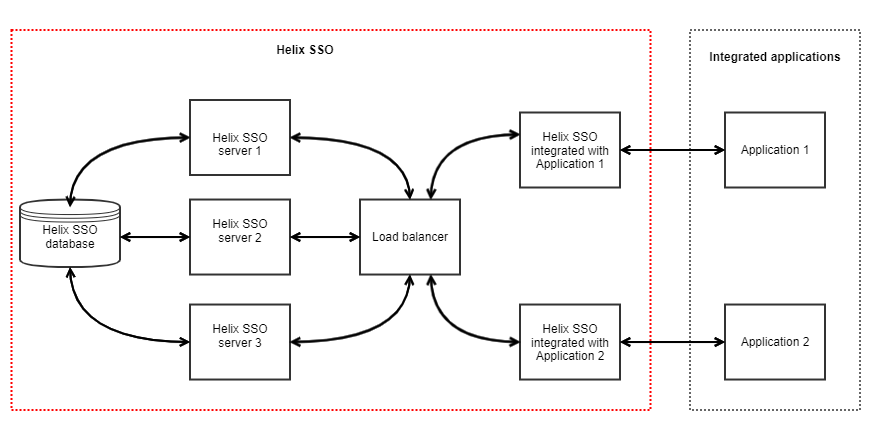
In HA mode, BMC Helix SSO can be integrated with applications that are hosted on a single domain or on multiple domains.
The end user requests can be handled by any instance because BMC Helix SSO does not require sticky sessions. If one of the HA nodes fails, the system failure is absorbed by the remaining nodes with minimal interruption. No additional configuration is required on the BMC Helix SSO side, as each node is unaware whether it works in HA mode or not. All HA mode configurations are done remotely by using the network infrastructure.
BMC Helix SSO in an HA mode functions as a single virtual server. Therefore, all configuration information, user sessions data, and user tokens are stored in a single database and shared (not replicated) between nodes. To prevent the database from becoming a single point of failure, database replication may be required.
Important
The configuration required for database replication depends on the specifics of the environment. The information about the database replication is out of scope of the BMC Helix SSO documentation.
Comments
Log in or register to comment.